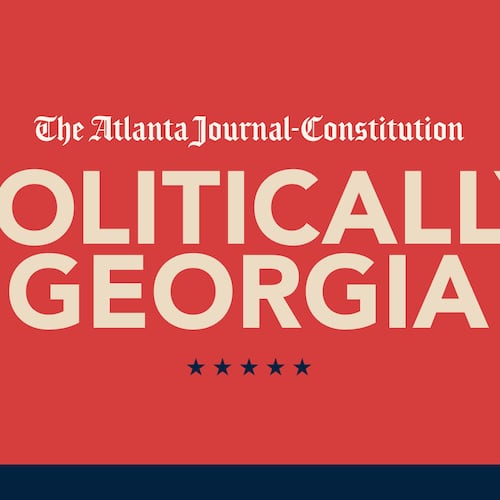The lottery-funded HOPE scholarship is running out of money, and students who depend on it may have to dig deeper to pay for college.
Gov. Nathan Deal on Tuesday unveiled sweeping cuts to the popular scholarship program, many of which could kick in as early as fall.
A major change would cut scholarships for potentially 180,000 of Georgia's 200,000 HOPE scholars to 90 percent of current tuition levels -- a move that has current and future students mulling their finances, and, some feeling short-changed.
"Ever since kindergarten we’ve heard to study hard and do well so you can get HOPE," said Kelly Mainor, a senior at Brookwood High School in Gwinnett County who has a 3.3 GPA and plans for college in the fall. "It’s disappointing because I worked so hard to earn that scholarship money."
Current HOPE students also were surprised to learn their scholarships will change and change quickly. Many had assumed they would be grandfathered in and vented on Facebook and Twitter.
If the cuts are passed it means a HOPE recipient would have to come up with hundreds of dollars to cover tuition and mandatory fees now covered by the scholarship. For example, a HOPE scholar at the University of Georgia would have to pay $353 out-of-pocket to cover a semester's tuition based on today's rates. Additionally, that student would have to find a way to pay for more than $400 in mandatory fees per semester for services such as transportation, health care and student activities. Tuition and fees for next academic year could increase, which would raise even further what students would pay.
Deal's proposals, which were rolled out with bi-partisan support, will reward top students by giving them a scholarship that covers full tuition and will carry the name of HOPE's creator, former Gov. Zell Miller.
Multiple cuts will shave about $300 million from the program that was once flush with cash but now is costing more than the Georgia Lottery is raising.
Pre-k, another lottery-funded program, will still be free to all 4-year-olds, the governor said. But hours will be shortened from 6.5 to four -- a move that Deal said will allow pre-k to make room for about half of the estimated 9,000 children on a waiting list.
HOPE, arguably the state's most successful program serving more than 200,000 students, takes cuts on multiple fronts. His proposals, included in House Bill 326, would also:
- Tie future scholarship amounts to lottery revenue, not tuition rates.
- Cut private college annual awards from $4,000 to $3,600.
- Eliminate remedial courses from those covered by HOPE scholarship. These classes will be covered by HOPE for students at technical colleges.
"We're taking action today to strengthen the HOPE balance sheet," Deal said as he stood before a podium that read: Enduring HOPE.
James Dutton, president of the student government association at Georgia State University, was on hand for Deal's announcement and said he's worried.
"Tuition is going to keep going up and that means the gap between HOPE and what we have to pay is just going to get bigger and bigger each year," he said. "A lot of us already work to go to college. This is going to price a lot of us out of college."
Josh Delaney, president of the student government association at the University of Georgia, said students and our parents are bearing the weight of these changes.
"There's only so much we can take," he said. "What's next?"
Lt Gov. Casey Cagle said changes had to be made.
"While these reforms aren’t easy to make, all of us share the determination to save the HOPE program for generations to come," he said.
Ilea Johnson, a junior at Southern Polytechnic State University, will take out loans to pay for what HOPE won’t cover. But she worries about finding a job after graduation and being able to pay it back.
"You have a plan in mind for how much you have to pay for college, and I don’t know if people understand how hard it will be if that plan is changed," she said.
Deal's proposal includes allocating $10 million to offer loans, carrying a 1 percent interest rate, to students who can’t maintain a 3.0. The loan, he said, would be forgiven for those who teach math, science, technology or engineering in Georgia’s public schools. One year of the loan will be forgiven for each year spent teaching, he said. The program is based on one lawmakers passed in 2008 but never funded.
College leaders released statements supporting Deal's proposal, noting that everyone has been asked to sacrifice.
About one-third of the technical college students currently receiving HOPE could lose the scholarship because they do not have a 3.0, said Mike Light, spokesman for the technical colleges.
Rep. Earl Ehrhart, R-Powder Springs, described the proposal as a reasonable and thoughtful. He said the onus remains on the State Board of Regents, which sets tuition, to keep costs down.
"There’s a lot of room for the Regents to make those kinds of financial decisions that maintain quality and provide reasonable cost for tuition," he said.
Chancellor Erroll Davis warned tuition will go up, but said it's too soon to say by how much. Tuition at some colleges increased by nearly 16 percent this year.
Child advocates applauded the governor’s plans to increase funding for pre-k transportation and extended day programs but were apprehensive about cutting the pre-k day, which they said studies have shown is beneficial, particularly for low-income students.
"Since 68 percent of Georgia's Pre-k students come from families with adjusted gross incomes of $40,000 or less, we are taking some risk in cutting back the program to a half day," said Pat Willis, executive director for the advocacy group Voices for Georgia’s Children.
Staff Writer Aaron Gould Sheinin contributed to this report.
What 10% means
HOPE scholarship students will have 90 percent of their tuition covered under a new proposal by Gov. Nathan Deal to reduce the overall cost of the program. Over the life of HOPE, the scholarship has covered 100 percent of tuition for state residents attending public Georgia colleges. Below is the out-of-pocket expenses full-time HOPE students could incur. This calculation is based on current tuition rates. If tuition is increased for next year, then students will pay more in out-of-pocket expenses. Students could potentially pay hundreds of dollars in mandotory fees, too, which vary by institution.
Tuition (semester) Estimated out-of-pocket expenses
UGA $3,535 $353
Georgia Tech $3,535 $353
Georgia State $3,535 $353
Georgia Southern $2,298 $229
Valdosta $2,298 $229
Kennesaw $2,298 $229
Southern Polytechnic $2,489 $248
Highlights of Deal's Plan for HOPE and Pre-k
Only students who have a 3.7 grade point average from high school will get 100 percent coverage of tuition under the newly created Zell Miller Scholarship. They must maintain a 3.5 GPA in college.
All other students with a 3.0 GPA can receive scholarships equal to 90 percent of the 2010-2011 tuition costs.
Students who have lost HOPE or the Miller scholarship will have one shot at reclaiming it. Currently, there’s no limit on how many times they can try to reclaim it.
Mandatory fees and books are no longer covered.
Remedial courses will only be covered at technical colleges.
Pre-k hours would be cut from 6.5 a day to 4 a day.
Transportation and extended day funding for pre-k will be increased.
About the Author
Keep Reading
The Latest
Featured



